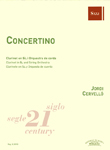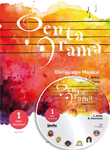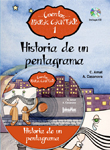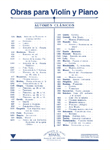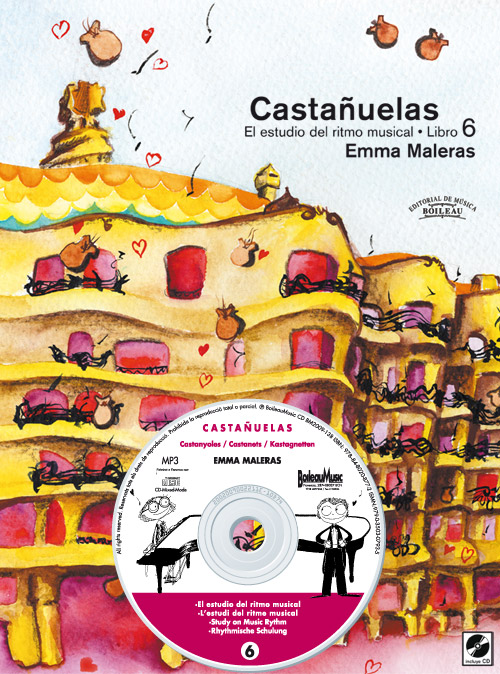CASTAÑUELAS - Libro 6
El estudio del ritmo musical
Castañuelas
MALERAS, EmmaReg.: B.3587
23,10 €
P.V.P. (VAT included 4%)
Add to cart
- Review: GRAU, Consol
- Ensemble: Solo.
- Genres: Musical education: Instrumental study repertoire; Instrument methods.
- Language: Español / Castellano
- Language of the comment: Castellano
- Product format: Partituras + CD / DVD
- Difficulty level: Intermediate
- Period: 2nd half S. XX - XXI
- Publishing house: Editorial Boileau
- Collection: Maleras
- Illustrator: FORNER, Ester
- No. of pages: 64
- Measure: 29,50 x 21,00 cm
- ISBN: 978-84-8020-878-9
- ISMN: 979-0-3503-0794-2
- Available in digital: No
- Available for rent: No
CASTAÑUELAS. El estudio del ritmo musical. Libro 6. Spanish version.
As explained in the Introduction, this volume is the continuation of the previous book, both of which are focus on popular Spanish dances.
In the previous book we were working on improving the techniques of various strikes and beginning to play them at greater speeds. We also gave special attention to the study of the carretilla with the right hand which we practiced using both thirty second notes and sixty-fourth notes. In addition, we continued studying the carretilla with the left hand, practicing it using eighth notes and sixteenth notes. At the same time we began to study different articulations and to study various nuances. In this book we will continue these studies and also add new strikes, increasing the speed and the difficulty of the rhythmic patterns throughout the different exercises and works which are included in this book.
This book is organized in much the same way as was Book 5 and the Study Plan is very similar, allowing the students to continue to advance in their studies.
We will begin daily practice in the following manner:
Finger articulation. Begin by practicing one or two works using the caretilla picada. Select them from those that are found in the prior books or practice those which the teacher suggests.
Exercises to develop technique. In this section there are a series of exercises for instrumental technique, without music but accompanied by the metronome. All use strikes and effects that the student already knows. There are also new techniques which are organized into chapters. Every day we should practice several of these.
Works. Afterward we will begin to study the works, at the first tempo and will begin with the corresponding preparatory exercises. We should also review Los Panaderos, which is found at the end of Book 5 (p. 55), using sixty fourth notes.
Once we can control all of the works at the first tempo we should begin to study them all again but at the second tempo. Just as in the previous books, continue at the second tempo until all the works are under control, as judged by the teacher.
The third and fourth periods of study. At the same time that we begin study of the works in this volume we can begin to practice the works found at the end of Book 4 (p.42) at the third speed and then then continue with those in Book 5.
In the progressive study plan for the castanets, the suggested tempos for the third tempo should be considered as an entirely new course of study. Just as commented in the previous books, speed is something that we acquire little by little through daily practice. If we begin to play fast too soon we not only do not make progress in our studies but we can actually go backwards in our studies and as a result, loose sound quality. For this reason we should not begin the third tempo until we can play perfectly all of the works at the second tempo in addition to being able to play those found in the preceding books at the third speed. It is up to the teacher to decide when to proceed, with the exception of the works “El vito” and “Verdiales”, which have four tempos in order to facilitate their study. In the case of these two works the fourth speed is part of this new course of study and the third speed may be practiced when all of the works in this book can be played at the second speed.
Preparation for the following courses. Firstly, there are a series of exercises for practicing the changes of accents with “binary rhythm” and “ternary rhythm”. Following these exercises we should continue with the study of the carretilla with the left hand and the “double carretilla” with thirty second notes. We should begin with these exercises when we can play at the third and fourth tempos in this volume.
Introducción: Bailes populares en España
Seguidillas manchegas
Las castañuelas en Cataluña
Plan de estudio para este sexto libro
Ejercicios para el desarrollo de la técnica: Las semifusas y su valor exacto
Los matices
Los cinquillos
Los posticeos
La media carretilla
Carretilla resbalada con ambas manos
Obras populares españolas 1 ª parte:
Obra 1 "Seguidillas manchegas" El vito" "Panaderos"
Obras populares españolas 2 ª parte:
El compás 3/8 "Los cuatro muleros" "Verdiales" "tanguillo de Cádiz"
Preparación para los cursos siguientes:
Ejercicios de cambios de ritmo binario y ternario y la velocidad repetitiva de cada dedo
Ejercicios para practicar los cambios de acentos entre el ritmo binario y el ritmo ternario
Ejercicios con fusas para la mano izquierda La carretilla resbalada con ambas manos con valores de fusas
Estudio de la doble carretilla


